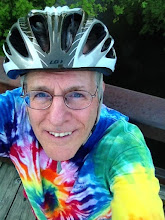NBC News reported on on June 19, 2012 on suburban teenagers buying heroin and dying -- the kind of kids one would see in a "suburban shopping mall," in contrast with the heroin "addict" stereotype we "associate with mean streets of city life." At no point does the white reporter or the white police sergeant -- who says the drug buyer could be "anybody's daughter" -- describe the race of the drug buyers ("not what you picture," he said). But the implication is clear.
Sadly, aside from the inevitable hyping of the story by television news because that is the convention of the both the medium and the message, heroin is more available and being used more. Deaths among teenagers from heroin have increased from 198 in 1999 to 510 in 2009.
Unaddressed are the "why" and the "what do we do about it," because the answers are complex.
"What we do about it:"
* Dramatically increase the number and improve the quality of inpatient treatment for substance use disorders. The Heroin Action Coalition of Montgomery County, MD found that there were 100 beds for teenagers to get opiate addiction treatment in all of the state of Maryland.
* Recognize that a lot of teen heroin use starts with use or misuse of prescription pain relief medication which is leading to dependency and addiction.
* Educate patients and parents about the risks and proper use of pain medication.
* Educate doctors about the ease of patient misuse of pain medication. Demand that doctors be better trained, and that they follow-up with patients to whom they prescribe pain medication.
*Educate drug users about techniques to reduce the risk of overdose:
*Assure that Naloxone (also called Narcan), the antagonist medicine that chemically interrupts opiate overdoses, is widely available. Be sure it is in every police car, on every fire truck and ambulance, at every nurse's station and first aid station, at recreation centers, amusement parks, libraries and other public facilities, hotel desk clerks, barber shops, beauty parlors and nail salons, so that when their is an overdose taking place, friends, family, acquaintances -- even total strangers -- can readily get Naloxone for someone experiencing an opiate overdose. Change laws to make it available to people who want it in the first aid kits in their vehicles, workplace, schools and homes.
* Adopt Good Samaritan 911 laws to encourage illegal drug users to call 911 for an ambulance without worrying about arrest and investigation.
The "whys" of growing teen heroin are complex as well.
A major factor is the explosion in the marketing and use of prescription pain medication, especially opiod medication. Highly addictive drugs are being prescribed by physicians who have poor understanding of their uses and their risks. Told to use all of an anti-biotic medication for an ear infection, bronchitis, etc., they believe they should use ALL of a narcotic prescription. Often that is enough to get addicted. When the pain pills are gone and hard to get, heroin prevents the pain of withdrawal, i.e. "dope sickness." This increase in addiction increases the demand for heroin.
Drug epidemics are not random. A leading anthropologist of drug epidemics, Michael Agar, explained that dramatic changes in drug use patterns reflect a confluence of change in drug production, distribution and consumption. The chemical similarity between heroin and opiate medication means that changes in American pain medication patterns will also lead to changes in American heroin consumption and markets.
Most American heroin comes from Mexico. The six-year old assault on Mexican drug trafficking organizations, begun by President Felipe Calderon in December 2006, has produced a bloody war that is familiar to anyone who reads the newspapers. The war is expensive. Income comes from drug sales. The pressure to get the income to buy guns, ammunition, pay "soldiers," pay bribes, etc. demands more sales. This leads to a demand in Mexico to increase production.
There is now a feedback-loop in Mexico of the "war on drugs" leading to more production and sales of heroin to support the criminal organizations. They have a greater incentive to get heroin to the American streets.
The "long-term what do we do about it" requires ending the stigma on being addicted or dependent to drugs. The only way to end the stigma is to legalize drugs. As long as it is "illegal" to be a drug addict, there will be a stigma about it that will prevent people from getting into treatment. And this stigma also deters legislators from putting "tax payer money" into treatment for "criminals."
Legalizing opiates does not mean selling them like tobacco or alcohol. Alcohol sales offer a useful lesson in that various forms of alcohol are often sold under very different regulations. The system of distribution is often complex. In California, anything can be sold in a grocery store or supermarket. In other states, nothing can be sold in a supermarket. In Virginia, beer and wine can be sold in a supermarket, but not in Maryland.
Legal opiates should be available to people who are addicted in a system of "addiction management." Professionals will work with people who are addicted to help them manage their lives to avoid getting sick, hustling, committing other crimes, and being in conflict with friends and family. An "addict in management" won't be stealing from family, lying to them, or obsessed with getting dope and getting high. They will be restricted from their sharing drugs. They will be expected to meet their obligations, such as going to school if they are students, or going to work if employed. They will need to attend counseling if necessary.
At the same time, proper education of doctors and patients about the risks of addiction is fundamental. Instead of advertising drugs to create demand, advertising about harm reduction as a means for drug users to control use and help users balance the pleasure and medical use is required.
Sphere: Related Content




